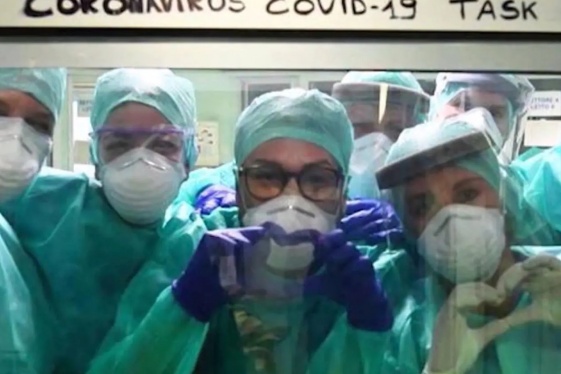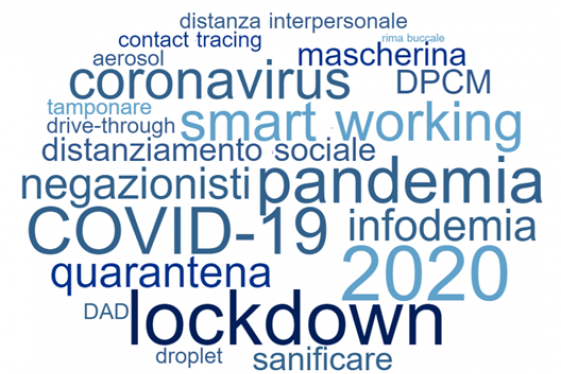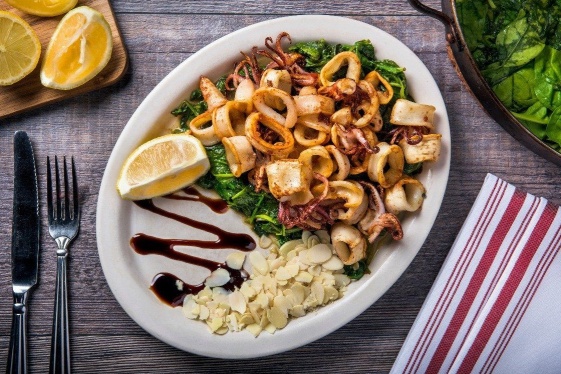Word of the Day– Pasticcio: do you make it or do you eat it?
Pasticcio (pah-stee-tchoh) comes from the vulgar Latin pasticium, in turn related to another late Latin word we know much better, pasta. It is attested in our beautiful language for the first time in 1525, a tad too late for our Dante to use it in his Commedia, but early enough to make it common when Caravaggio was around. Fare un pasticcio means t...
READ MOREScholarship opportunity from the Patrons of Italian Culture
The Patrons of Italian Culture Announce The Albert J. Casola Prize for the Study of Italian Language and Culture "Full Time" undergraduate and graduate students of Italian descent, enrolled at an accredited educational institution are eligible for consideration for this scholarship. A major or minor in Italian Language or Italian Studies is not a p...
READ MORED'Eugenio Presents on Comics and Graffiti at the 52th Annual NeMLA Conference
The University of Arkansas' Daniela D'Eugenio, assistant professor of Italian, recently presented "Comics and Graffiti for the 'Week of the Italian Language in the World'" on the roundtable session "Teaching Popular Culture in the Intermediate Language Courses" at the 52nd Annual Convention of the Northeast Modern Language Association (NeMLA). The...
READ MOREWhat's up with WTI: Editorial # 137
Dear friends, today I start this editorial with a good news about me and I want to share it with you: I received the first dose of anticovid vaccine, and next April 2 I will have the second one. I believe that for me it was fate that a wonderful Italian nurse, Celeste Radatti, inoculated me with an American vaccine. Two flags, One vaccine! On this...
READ MOREItalian language: Un'anno dopo. A Year Later, the Things We’ve Learned
March has finally arrived and spring is slowly making its way back into out lives. We’ve all spent over a year in this crazy timeline and it is now clear that our routine has changed, and perhaps our perception has also changed, but above all, our language has definitely changed. Let’s take a look at some Italian words that have made their way into...
READ MOREItalian-Americans and the language of food: How calamari became galamar and ricotta became rigott
New Jersey is a wonderfully diverse place. Though a relatively small state, it has the highest population density in the U.S. It's also brimming with an immense amount of Italian-American residents. I'm half-Italian, but I didn't grow up speaking a lick of the mellifluous tongue. From pizza and pasta to "The Sopranos," I was raised in a place where...
READ MOREHow to Use Italian Accent Marks from Acute to Grave
Just like the umlaut (those two dots over some vowels) in German and the tilde (the squiggly line over the letter n) in Spanish, Italian has a couple of letter markings that don’t exist in English, namely accents. Though tiny in size, these markings pack a punch as far as pronunciation—and, at times, meaning—so don’t underestimate their importance....
READ MOREFrancesco Isgrò (President of the Italian American Museum of Washington DC)
There are almost twenty museums of Italian emigration to America, and another one has recently been inaugurated. It is part of a wonderful complex in the US Capital, Washington DC. I am pleased to have Francesco Isgrò as guest and protagonist of this interview, President of this wonderful new place that celebrates the Italian American experience an...
READ MOREItaly has never been so close
italiana is the Farnesina’s response to the demand for Italian culture around the world. A unique vessel where music and performing arts, literature and publishing, cinema, visual arts, archaeology and cultural heritage, design, food and wine come to the fore. A project that sees the Ministry of Foreign Affairs and International Cooperation engaged...
READ MOREThe Architects and Origins Behind the Italian Language
Modern Italian, like many other languages, originated from Latin. After the Roman Empire fell, Classical Latin continued to be used for most writings. A different version, Vulgar Latin, became more commonly spoken by the average person in parts of Italy and eventually led to Classical Italian. Latin continued to change over the centuries, creatin...
READ MORE











